Churches
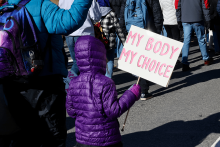
Megan Boyd wasn’t surprised when she first heard her child Daisy describe the phrase “your body, my choice” being used at school. Saddened, yes. Disappointed, absolutely. But for Boyd, the surge in misogynistic rhetoric following the election was just another sign of a growing boldness she’d seen in her New Hampshire town.

Like any other Gen Zer, I’ve grown up hearing about the potential harms of social media: As early as elementary school, teachers and parents warned us of stranger danger, not just in the grocery store, but also online. I was 12 when I got my first social media account on Instagram (even though my hand-me-down iPod Touch didn’t have a camera). In seventh grade, I, and many of my classmates, wrote our final essays for English class on the influence of social media on teenage girls’ body image. I was in junior high when news broke that Facebook user data had been improperly harvested to manipulate U.S. voters. In my high school’s speech and debate club, I learned about dangers of doxxing — posting people’s personal information, like addresses, online as a way to target them for violence. And in my own work here at Sojourners, I regularly see the hate and homophobia that shows up in social media comments.
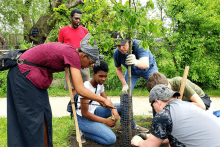
In a Cleveland neighborhood, a set of 25 young trees line the space between the sidewalk and the road. The trees were planted by volunteers from Calvary Reformed Church in 2019, an example of the types of actions that churches can take to address rising heat in their neighborhoods. Now, thanks to 2022’s Inflation Reduction Act, nearly $1 billion will fund similar projects across the nation.

THE FIRST TIME I became conscious that I was carrying the effects of religious trauma, I had just moved to Seattle and was sitting in a church, sweating.
My heart was beating fast; I couldn’t understand what was happening. This church, one I had chosen expressly because of its progressive, LGBTQ+ affirming stance, was supposed to be safe for someone like me, a queer person who deeply valued my faith. But I didn’t feel safe. I looked at the faces in the room with suspicion, searching for any indication of a bait-and-switch, and left the building quickly once the service was over.
Despite what I knew about the church — they welcomed LGBTQ+ people at any level of leadership, were committed to anti-racism work, and weren’t afraid of doubt or theological exploration — my body told me another story. As I sat in the cold folding chair, I tried to reason with myself, repeating these facts to calm down. But I didn’t feel calmer; I felt worse. I sat on my hands, legs shaking, as I waited for the service to end.
Because I had moved to Seattle to work on a master’s degree in counseling psychology from an institution that specialized in trauma, I soon learned what had happened: In that moment, my body had experienced the effects of trauma. Even though I cognitively knew the church was supposed to be safe, my body couldn’t discern this church from all the churches I had been in before — churches filled with people who weren’t afraid to tell me I needed to become straight for God to save me from hell. My body was sending warning signs: Be careful, environments like this aren’t safe. Despite the years of work I had done to detach myself from the rigid belief system of my youth, despite the ways I had fought to find a more life-giving approach to theology, I was beginning to reckon with the reality that changing my beliefs didn’t mean I had healed from the environments in which I was raised.
Now, years later, I see more people waking up to the realities of lingering religious trauma. When I scroll through my streaming apps, I see documentaries such as Shiny Happy People, Pray Away, and Hillsong: A Megachurch Exposed that detail different forms of religious harm. I think this growing awareness of religious trauma is part of the driving force behind “deconstruction,” a buzzword that describes the process of reevaluating, changing, and sometimes abandoning one’s beliefs. But what I don’t see as often on Netflix — or on podcasts or on social media or at church — is honest talk about the process of healing. And as someone who now works as a therapist helping survivors of religious harm find healing, I know there is a lot more to say.
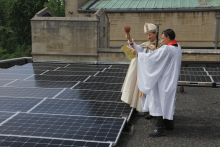
In 2014, Shepherdstown Presbyterian Church in West Virginia installed an array of 60 solar panels with a scrappy financial model, hoping to lead by example and inspire other communities in Appalachia to transition to solar energy as well.
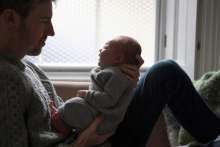
In a country with the weakest parental leave standards of all its economic peers, church policy to support new parents is rarely more generous than what one might get from a public school, an architecture firm, or a dentist’s office. In many cases there is no set policy, and ordained and lay staff are sometimes treated differently.
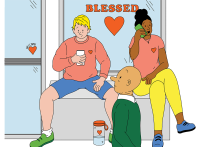
IT'S HARD TO tell whether Southern California, where I live, holds more nondenominational churches or neighborhood gyms. Sometimes, it’s even hard to tell whether a facility is a nondenominational church or a fitness center. At both the church and the gym, you are likely to encounter over-enthusiastic greeters in the foyer. And as you proceed farther into either type of institution, you’ll begin to hear vaguely inspiring pop-rock music. (Are the lyrics love songs to your boyfriend, to Jesus, or to an unrealistic projection of your future self? It’s hard to say — that’s the genius of it.) As you arrive in the back of these buildings, you’ll see a shared main attraction: a vivacious man in expensive sneakers urging you to strive for greatness, push through the pain, and please, please, please bring your friend with you next time. The websites of both the gyms and the churches will promise you a “no judgment zone” where “all are welcome.” Pretty good chance both are lying to you. But there’s free child care!
The biggest similarity of all between nondenom churches and neighborhood gyms? Their names: They will usually be one word long: Arise, Equinox, Crossroads. Likely, the names could also serve as code words for MDMA or WWE wrestlers’ stage names: The Rock, The Renegade, Saddleback.
Below are the names of gyms and churches. See if you can rise to the challenge, push through the pain, and determine which names belong to churches and which ones belong to gyms that I can’t afford.
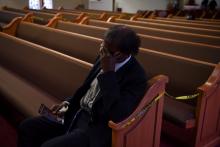
This week the United States surpassed a tragic milestone: Half a million people in this country have died from COVID-19 — a number that, while devastating, doesn’t even take into account the full human toll of the virus. While numbers of cases, deaths, and hospitalizations have begun to fall precipitously (for a variety of overlapping reasons) and nearly 50 million Americans have received at least one dose of the vaccine, this dark winter feels like a prolonged wilderness of grief and loss.
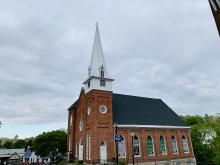
This Sunday, churches in parts of Virginia will be permitted to open their doors for services as part of phase one of Gov. Ralph Northam’s reopening plan.
It’s a moment many pastors in the state have been eagerly anticipating.
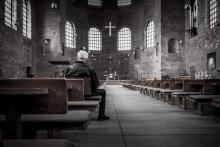
The church is called to meet Jesus in the streets with the homeless — for in a time when people are called to shelter in place they have no place to go. The church must also meet Jesus in places like Flint, Mich. where poor people who are already suffering from respiratory conditions related to contaminated water are amongst those at highest risk.
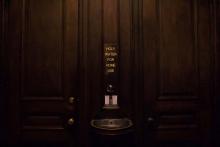
COVID-19 reminds us that we cannot function alone. Some social gaps can make people more vulnerable. For example, if someone in your community has the symptoms of COVID-19, would that person have someone to call? They may need a method to get to the hospital. They may need help in paying for the medical bills because they’re uninsured or underpaid. If schools closed down in your area, and the parents still needed to go to work, would the children have somewhere to go? Would they have something to eat? If someone in your community is experiencing anxiety regarding the virus, are your community members equipped for the pastoral care work of acknowledging fear and offering solidarity and love?
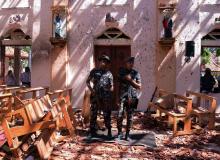
Sri Lanka said on Monday it was invoking emergency powers in the aftermath of devastating bomb attacks on hotels and churches, blamed on militants with foreign links, in which 290 people were killed and nearly 500 wounded.
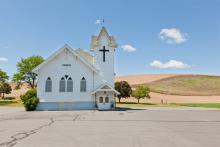
"You’re talking about state violence against communities. You have to speak up and take a stand about that. There’s not a nice way to just play in the middle."
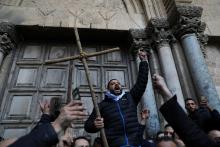
“It is absurd for Jerusalem residents to fund municipal services for the churches … on their own, and for the municipality to be prevented from collecting enormous sums that could significantly improve the city’s development and services,” Barkat said.
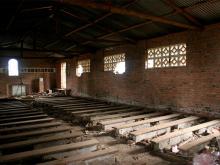
David Himbara, a Rwandan international development advocate based in Canada, called the government’s justification for the closures bogus and said the “real reason … is fear and paranoia.”

After each massacre, guns are defended with religious fervor, as though owning a weapon is akin to owning a Bible. We’re told that the problem in our society isn’t unfettered access to weapons, but a failure by godly people to arm themselves and go out and kill the ungodly people. We’re told we need more “good” people buying guns and perfecting their aim so they can shoot all the “bad” people.
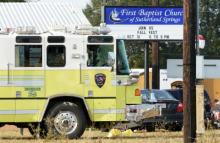
“My job as the shepherd of the church is to protect the flock. And I will do so with whatever means I need.”
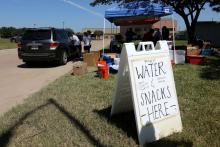
The Texas officials’ letter follows a Sept. 4 lawsuit filed by three churches in the state that were damaged by Hurricane Harvey. They are challenging the current FEMA policy, which “explicitly denies equal access to FEMA disaster relief grants for houses of worship solely because of their religious status,” according to the lawsuit.

Enough of the church voted for a president that made such a decision among others, and those same churches, those same Christians, still uphold those decisions. As people who wish for a better America, we are called to remind one another that we belong to each other, no matter what race, religion, ethnicity, or sexual orientation.
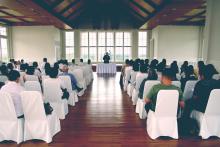
What now? Where do churches go from here? Here are five initial thoughts I would like to share, knowing the answer isn’t simple — it will take our collective discernment from the whole diversity of our churches to continue addressing our post-Charlottesville way forward.